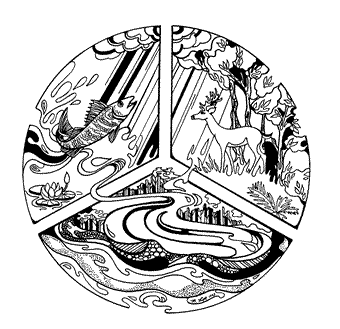 |
Upper Mississippi River Restoration ProgramLong Term Resource Monitoring |
|
 |
||
Water Quality |
||
| LTRM Database Download Tool - Water Component |
|
The LTRM Database Download Tool provides the most complete access to raw data using the widest variety of query parameters. Queries made using the Water Quality Database Download Tool are real time; it may take a few minutes to retrieve your results. The Water Quality specialists have used their best-professional-judgement to develop a "user-friendly" data set for Stratified Random sampling. This reduced data set has only selected parameters, and has questionable data removed. The data set is available in comma separated format. These data sets can be used with SAS code found on the Statistics web pages to create sample weights and estimate means within and across strata and years. | |
Use of LTRM Data for Water Quality Monitoring
The Long Term Resource Monitoring (LTRM) element performs basic limnological field measurements in the Upper Mississippi River System (UMRS). Correct interpretation of the resulting measurements requires that the user understand the design, intent, and history of the sampling effort. Some of the necessary information is provided below, but all users of LTRM limnological data are strongly encouraged to read and understand the LTRM Water Quality Procedures Manual that describes in greater detail both historical and current procedures.
Summary
LTRM Water Quality Sampling Design
Three LTRM field stations began taking limnological measurements in Pools 8, 13, and 26 of the Upper Mississippi River in summer 1988. Sampling in La Grange Pool of the Illinois River began in September 1989. A few months later (January 1990), LTRM water quality sampling commenced in Pool 4 (Lake Pepin), and a year later (March 1991), sampling was begun on the Open River reach near Cape Girardeau, Missouri. All six field stations have operated continuously since joining the LTRM.
As the LTRM field stations have grown, the parameters measured in water quality monitoring have gradually expanded. From 1988 to 1991, the LTRMP limnological sampling effort was limited to a basic suite of field measurements that required no laboratory analysis. A limited suite of laboratory analyses was added to the water quality effort in 1991 (these samples were analyzed by the U.S. Army Corps of Engineers Waterways Experiment Station, in Vicksburg, Mississippi). In 1993, the LTRM developed an internal analytical lab, and the list of parameters was further expanded.
The basic design of the sampling effort was revised in 1993. From July 1988 through June 1993, the LTRM performed weekly limnological measurements at 15-30 permanently fixed sampling locations in each study area. These sampling locations were chosen without randomization (or replicaton) to represent 23 general habitat types and typical river reaches in the UMRS. This approach did not meet the needs of the LTRM, and in June 1993, a new sampling design was implemented that incorporated both fixed-site sampling (at a revised set of sampling sites on a biweekly basis), stratified random sampling (on a quarterly basis), and an expanded set of measurements. Fixed-site sampling is now used to monitor tributaries, headwaters, tailwaters, and other points of special interest. Randomized sampling is used to characterize broad aquatic (habitat) areas.
Special care is required to combine current data with data from the period prior to this design change. Interpretation of the stratified random sampling data collected after June 1993 also requires additional information. Users are strongly encouraged to consult the LTRM Procedures Manual(s) and Upper Midwest Environmental Sciences Center staff to determine the applicability of these data to specific applications.
Reference
Soballe, D. M., and J. R. Fischer. 2004. Long Term Resource Monitoring Program Procedures: Water quality monitoring. U.S. Geological Survey, Upper Midwest Environmental Sciences Center, La Crosse, Wisconsin, March 2004. Technical Report LTRMP 2004-T002-1 (Ref. 95-P002-5). 73 pp. + Appendixes A-J
Disclaimer
These data have been generated by State agencies under contract with the Department of the Interior and the Upper Midwest Environmental Sciences Center (UMESC). Although these data have been processed successfully on a computer system at the UMESC, no warranty, expressed or implied, is made regarding the accuracy or utility of the data on any other system or for general or scientific purposes, nor shall the act of distribution constitute any such warranty. However, error correction is a continuing process, and the UMESC routinely makes changes to data as errors are discovered. The file date is referred to as the release date and should be mentioned in all references to data. These data have been provided as a unit package to ensure that you receive a valid data set collected in a consistent manner. Methods, purposes, and conditions can vary dramatically among other data sets from the UMESC or other sources unless the user fully understands the procedures and purposes used to create each set of data and can verify that data are comparable across sources.
Page Last Modified: June 1, 2021



